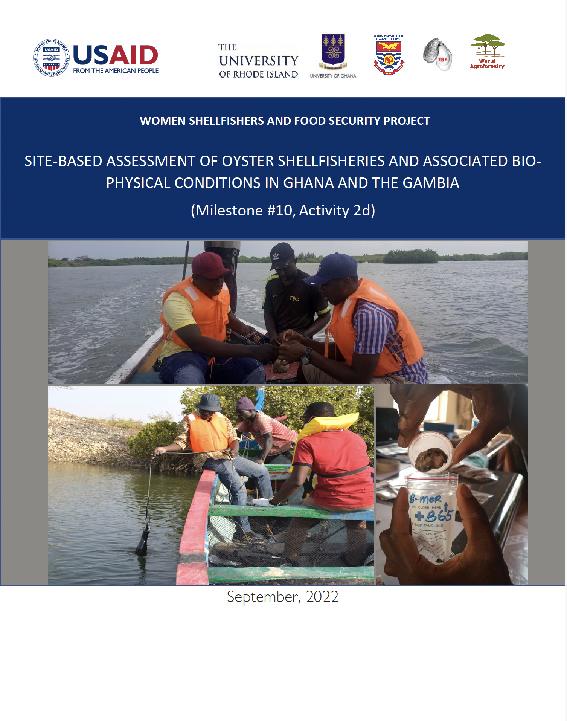Country
Profiles
Country
Networks
Country
Associations

This is a technical report on the site-based research under Activity 2d of the Women Shellfishers and Food Security Project. Activity 2d involved a one-year study of shellfisheries, shellfish biology, and physicochemical analysis of water within six estuarine and mangrove ecosystem-based livelihoods sites, three each in Ghana and The Gambia. Field data collection commenced in March 2021 and ended in March 2022, while laboratory processes continued to the end of May 2022, and results are presented in this report. Monthly data collection on physico-chemical properties of the estuaries (depth, temperature, salinity, dissolved oxygen, pH, and turbidity) were conducted at all six sites. Quarterly data collection on nutrients (phosphates and nitrates), microbial loads (total coliform, fecal coliform, and E. coli), and heavy metals (Pb, Hg, As, Cr, and Cd) in both water and oyster flesh, were executed at all sites. Biometric data (shell heights, shell lengths, whole weight, shell weight, meat weight, and dry weight) on oyster samples was collected every month for all six sites. Sex determination by visual observation and histological processes was conducted on oyster specimens from all six sites. In addition to these biological and ecological studies, two separate social surveys, one on the socioeconomics of shellfishing households and another on oyster fishery were conducted in the adjoining communities of the six sites. Further studies on the oyster exploitation were also conducted by collecting the catch and effort data at each site.
- Author(s)
- Chuku, E. O., Okyere, I., Adotey, J., Abrokwah, S, Effah, E., Adade, R. and Aheto D. W.
- Publisher / Institution
- Centre for Coastal Management (Africa Centre of Excellence in Coastal Resilience), University of Cape Coast, Ghana and Coastal Resources Center, Graduate School of Oceanography, University of Rhode Island. Narragansett, RI, USA.
- Date published
